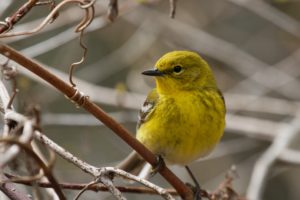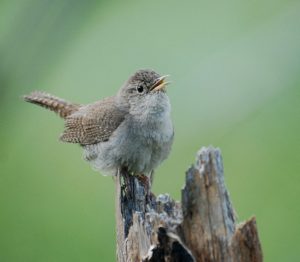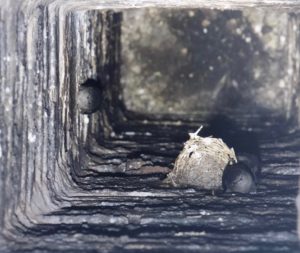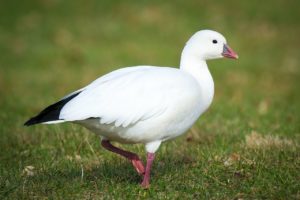Ripples by Nancy Nabak, Communications Coordinator
Last night I dreamt my birding friend said he’d found a “Level-headed-arrow-back” duck. What in the world? Truly, such a duck does not exist. I’m pretty sure it came from the fact that I had just completed a 24-hour birdathon a couple of days prior and birds were still flying around in my head as I went to sleep.
 On Friday and Saturday, I participated in a friendly competition to raise money for bird conservation and awareness. We had 24 hours to find as many species as possible. I belonged to the team “No Egrets” and we tied for 4th place with 152 bird species identified. This brilliant Pine warbler (photo) was one of them. Teams could bird anywhere in the state of Wisconsin, but I ran into many who were here, scouring for birds at Woodland Dunes.
On Friday and Saturday, I participated in a friendly competition to raise money for bird conservation and awareness. We had 24 hours to find as many species as possible. I belonged to the team “No Egrets” and we tied for 4th place with 152 bird species identified. This brilliant Pine warbler (photo) was one of them. Teams could bird anywhere in the state of Wisconsin, but I ran into many who were here, scouring for birds at Woodland Dunes.
Now that spring migration is in full swing, our singing warblers, thrushes, and vireos are back. Unfortunately, many will only be here for a short while before moving further north to their nesting grounds. So, while they’re here, let’s get out and enjoy them! You can count them, listen to them sing, watch them in flight, or just admire the fact that they’re back again and winter has finally lost its grip.
The bright lemon yellow, orange and black, and blue and gold neotropical migrants are fascinating to the eye. This is the time to witness the artist’s paintbrush on these birds. Take a hike on Willow Trail and see what brilliant-colored treasures you might find. Take your time and move slowly. These little guys like to hop and bounce around in the treetops, so be prepared to watch for movement first, then look for their bright colors and markings.
This Saturday, Woodland Dunes will be celebrating World Migratory Bird Day and our 81st Bird Breakfast tradition. Celebrating birds? You bet. They give us song. They give us entertainment, and they give us hope. The world could use a little more of these three things.
And no, we don’t eat birds for breakfast, not even eggs come to think of it. Initially, Bird Breakfast began by a local birder and librarian, Merle Picket. After a friendly Saturday morning bird challenge was complete, she offered a pancake breakfast in her home. Eventually it grew so large that people were grilling their breakfasts in public parks. Then, the event came to Woodland Dunes.
Over 100 people will celebrate this Saturday morning by eating a ham and pancake breakfast not in the parks, but in the comforts of our Nature Center. Free guided bird hikes and children’s activities will also be offered. This tradition has lasted for 81 years, that tells us something. Birds are a reason to celebrate!
photo: Pine warbler by Nancy Nabak




